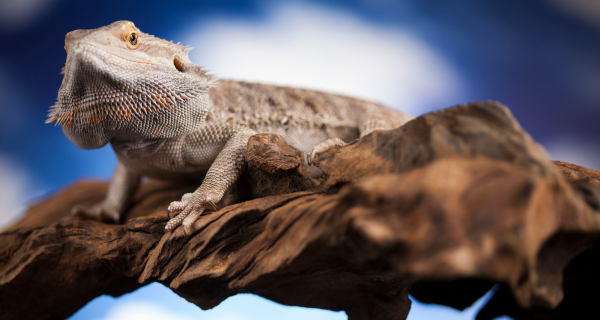
Written by The Pet Directory with information supplied by Teri Bellamy, BVSc., DipWM&H, MEnvSc
CALCIUM/VITAMIN D DEFICIENCY
This is the most common nutritional/husbandry problem seen in reptiles.
Calcium is required in all vertebrate animals (fish, amphibians, reptiles, birds and mammals) for bone formation and for nerve transmission. Young animals require more calcium than adults because of the rapid bone formation. Females producing eggs or young also require more calcium for the formation of bones in the foetuses and for egg shell production (lower than in birds) and because calcium is required for the oviduct contractions during egg laying or birth of live young.
The calcium in the diet must be absorbed by the intestine. Vit D3 - cholecalciferol, is required for the absorption of calcium. (VitaminD2- ergocalciferol is also an active form in mammals but is inactive in reptiles and birds.) Vitamin D3 is produced in reptile skin under the influence of UV radiation in sunlight. VitaminD3 also is required for the calcium absorbed to be deposited in bone structure. Vitamin D also promotes the absorption of other minerals including iron, magnesium and zinc. Calcium is combined with phosphorus in the formation of bone in the ratio of 1.2:1, so for strong bones phosphorus is also required but excess phosphorus in the diet can retard the absorption of calcium.
Clinically three situations occur to cause problems with bone formation:
1) there is inadequate calcium in the diet especially in growing reptiles. Low calcium diets include young animals used as feed- pinkie mice, day old chicks and rat pups. Insects are also low in calcium- the exoskeleton of insects is not calcium based. Meat is also low in calcium (and high in phosphorus).
2) Vitamin D deficiency occurs due to lack of exposure to sunlight or ultraviolet radiation of the correct frequency. Rarely does this occur due to inadequate precursors of vitamin D. Ultraviolet rays can be blocked by glass, perspex and water, though they allow visible light through. This means that clouds also block UV rays and animals in water do not absorb UV radiation. Shade, however does not block reflected UV radiation, so on a bright day an animal under shade will still get UV radiation exposure. The requirement for UV exposure varies with species-nocturnal animals have lower requirement while animals from the tropics have high requirements. Ultraviolet lights are poor substitutes for access to direct sunlight.
3) reproducing females have a higher requirement for calcium than other adult reptiles. Calcium deficiency in reproducing females can manifest as retained eggs or young, due to the inability of the oviduct to contract forcefully without adequate calcium. It can also be seen as twitching and muscle fasciculation in some species e.g. Fijian Banded Iguanas. In situations of chronic calcium/vitamin D deficiency these animals withdraw calcium from their own bones to supply the developing foetus and become soft boned, even rubbery. This occurs particularly in diurnal species fed on juvenile animals such as day old chicks and housed indoors.
The most frequent reptiles I see with calcium/vitamin D deficiency problems are bearded dragons and others of the dragon family and diamond and carpet pythons. Of the exotic reptiles chameleons and Fijian iguanas are commonly affected by calcium/vit D deficiency.
Supplements
There are hundreds of vitamin and mineral supplements available:
Calcium supplements
Calcium carbonate is fairly insoluble, therefore large amounts are required to be ingested. It is high in calcium and has no phosphorus so is a good supplement for diets based on meat (which already supplies plenty of phosphorus), or insect diets. It can be used to gut load insects just prior to feeding out to increase the calcium content of these insect diets. The common practice of dusting insects prior to feeding is less effective than gut loading because much of the dust simply falls off especially if the insects are not immediately eaten. If more than one animal is fed together the subordinate animal gets less food in total but also is slower to feed and therefore will get a much lower calcium content in the diet.
DCP= dicalcium phosphate is fairly insoluble so large amounts required. It supplies calcium and phosphorus in good balance, so is good to increase calcium and phosphorus in an already Ca/P balanced diet e.g. reproductive females on a good normal diet.
Calcium gluconate has no phosphorusand is water soluble so can be delivered in water. This is useful for animals off their food. It is readily absorbed by the gut so only smaller amounts are required . It is sweet so most reptiles will take it readily in water.
Milk is not a good calcium source for reptiles. There are other components of milk which are not well tolerated by reptiles including lactose, the main sugar in milk. Reptiles do not normally ingest milk and do not have the enzymes to breakdown lactose and some other ingredients in milk. Even the small amount of milk inside the gut of a pinkie mouse or rat pup can cause digestive upsets in reptiles with bacterial overgrowth causing gastritis in young reptiles and toxic metabolites being formed causing occasional acute deaths if these food items are thawed too slowly or incorrectly.
Vitamin D supplements
Only cholecalciferol = vitamin D3 is the active form for reptiles (vitamin D2- ergocalciferol is not useful). This vitamin can be toxic so don’t oversupplement. It is fat soluble so it is absorbed better with a fatty meal and is stored in the body in both liver and fat stores. It is NOT required by animals getting adequate sunlight. Vitamin D3 can be stored in the body, mainly in the liver so occasionally liver problems can also present with bone abnormalities. Vitamin D3 can deteriorate with storage so check dating on any supplements. Vitamin D can be toxic in large amounts and can cause calcification of soft tissues including blood vessels and organs such as kidneys and skin.
Ultraviolet lights are expensive and often inadequate. To be effective the reptile needs to be able to get within 10” of the light and often these lights give off light long after they cease to produce the correct wavelength of ultraviolet required for vitamin D production. Generally the globe needs to be replaced at least every 3 months irrespective of whether it appears to working.
Sunlight is free and never produces the wrong wavelength! It does, however get blocked by water, glass, plastics and perspex so when placing animals out to get access to sunlight remember to use enclosures made from shadecloth, wire mesh or insect screening mesh. A good rule of thumb is to allow animals access to an average of 1/2 hour sunlight per day or 3.5 hours per week.


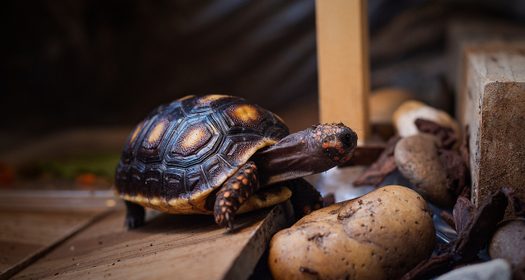
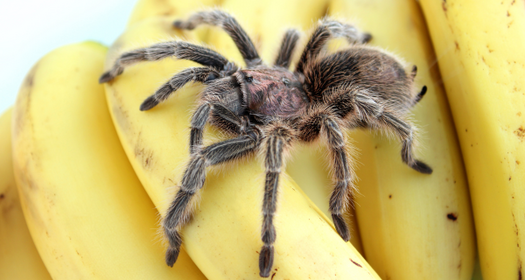
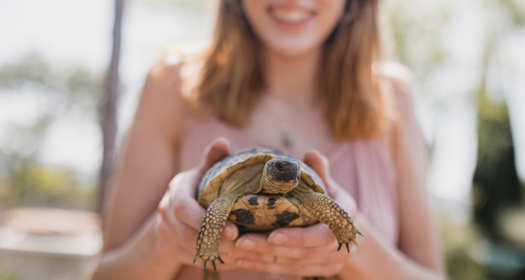
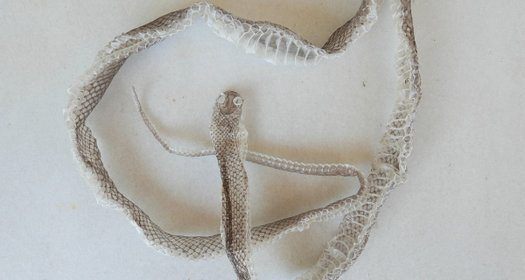
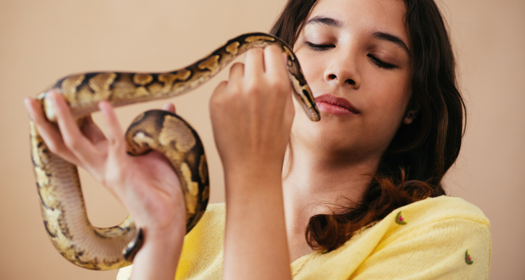




Leave Comment Below